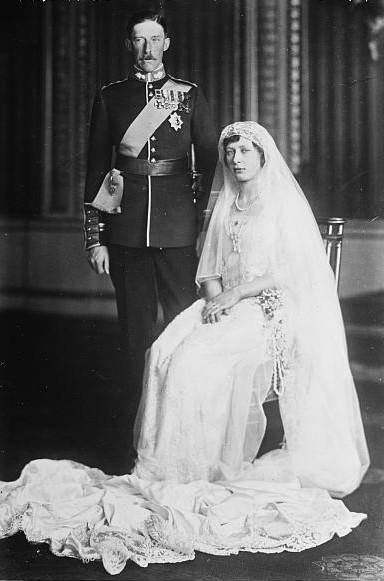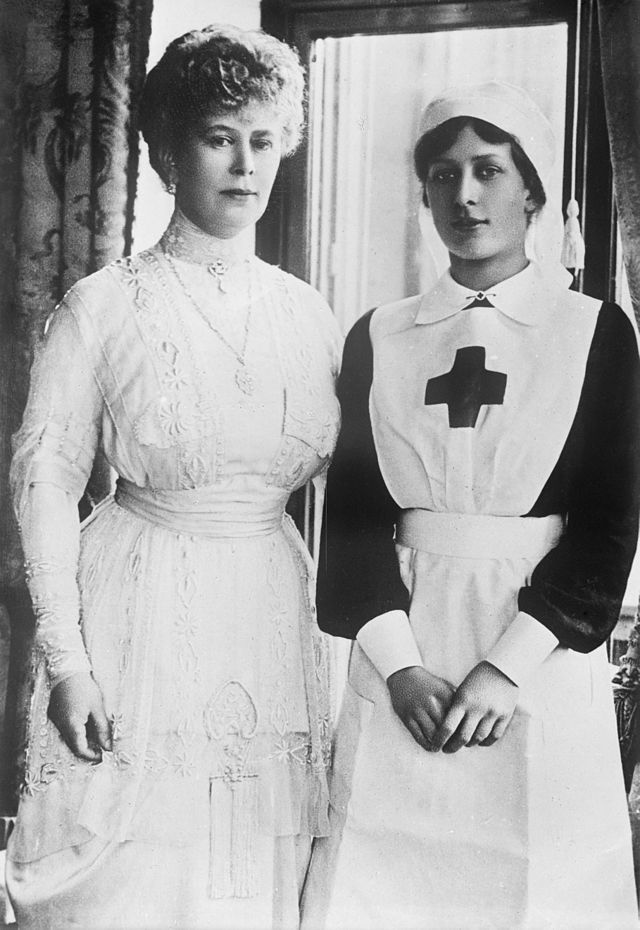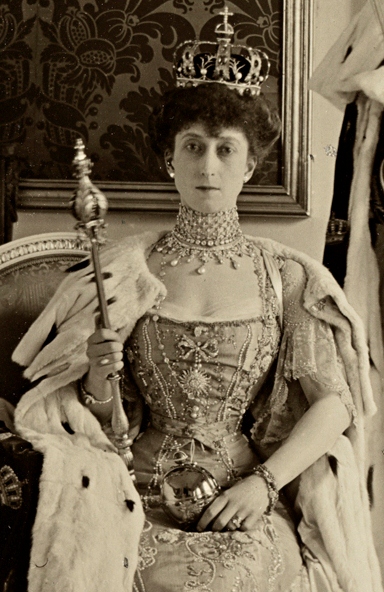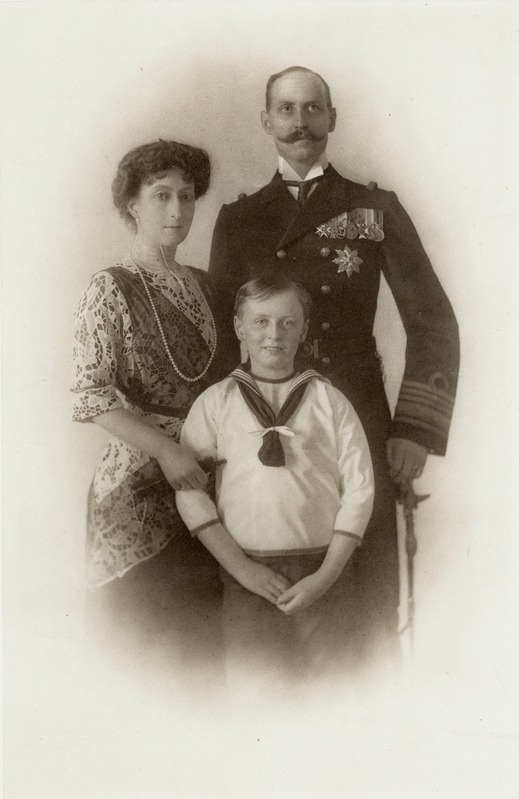by Scott Mehl © Unofficial Royalty 2014

Princess Margaret, Countess of Snowdon photo: Wikipedia
Princess Margaret was the second daughter of King George VI of the United Kingdom and Lady Elizabeth Bowes-Lyon, daughter of Claude Bowes-Lyon, 14th and 1st Earl of Strathmore and Kinghorne, and younger sister of Queen Elizabeth II. She was born Princess Margaret Rose of York on August 21, 1930, at Glamis Castle in Scotland. At the time of her birth, she was fourth in the line of succession to the British throne.
She was christened by Cosmo Gordon Lang, Archbishop of Canterbury in the Private Chapel at Buckingham Palace in London, England on October 30, 1930. Her godparents were:
- The Prince of Wales – later King Edward VIII and Duke of Windsor (her paternal uncle)
- Princess Ingrid of Sweden – later Queen of Denmark (her father’s second cousin)
- Princess Victoria of the United Kingdom (her great-aunt)
- Lady Rose Leveson-Gower (her maternal aunt)
- The Honorable David Bowes-Lyon (her maternal uncle)
Just six years after she was born, her grandfather King George V passed away and her uncle became King Edward VIII. Just eleven months later, he abdicated, and Margaret’s father became King George VI. The family moved from their modest home at 145 Piccadilly, to Buckingham Palace. Margaret was a Brownie with the 1st Buckingham Palace Brownie Pack, and later a Girl Guide and Sea Ranger. These organizations held a special place in Margaret’s heart, and she remained involved with them until her death. She was educated privately by a governess, Marion Crawford, who later wrote a book about the Princesses which resulted in her being banished from royal life. During World War II, Margaret and Elizabeth lived at Windsor Castle, deemed safer than living in London. It was suggested that the two be sent to Canada for the duration of the war, but their mother quickly dismissed that idea. Despite the war, the two girls managed to enjoy a relatively ‘normal’ life at Windsor.
Sadly, in February 1952, her father King George VI passed away, and her sister became Queen. Margaret and her mother soon moved into Clarence House, along with the new Comptroller of her mother’s household, Group Captain Peter Townsend. Townsend had been an equerry to King George VI, and later Deputy Master of the Household. He and Margaret began a relationship and quickly fell in love. In 1953, he proposed and Margaret accepted. However, there were many obstacles at the time. He was sixteen years older than Margaret and was divorced with two children. At the time, the Church of England would not sanction the marriage of a divorced person. The Queen, who was preparing for her Coronation and then the Commonwealth tour, asked the couple to wait a year. Hoping to dissuade them, Queen Elizabeth had Townsend transferred to her household. For the next two years, the couple waited, hoping to be permitted to marry, but Prime Minister Winston Churchill advised the Queen that Parliament would not approve the marriage unless Margaret relinquished her rights to the throne and her royal position. Margaret finally gave in. On October 31, 1955, she issued a statement announcing she would not marry Group Captain Townsend. She chose to put her royal role and duties ahead of her personal happiness.
Five years later, on February 26, 1960, it was announced that Princess Margaret was engaged to Antony Armstrong-Jones. The two had managed to keep their relationship very private, taking many people by surprise when the engagement was announced. They married in Westminster Abbey in London, England on May 6, 1960. Their wedding would be the first British royal wedding to be televised. Despite her position as daughter and sister of a Sovereign, only one foreign royal attended, Queen Ingrid of Denmark, one of Margaret’s godparents. It was speculated that many other royals disapproved of Margaret’s marriage to a commoner, let alone a photographer.
Following a six-week cruise on HMS Britannia, the couple moved into Apartment 10 at Kensington Palace in London, England. The following year, Margaret’s husband was created Earl of Snowdon and Viscount Linley. Having initially turned down any titles, the couple decided to accept when they were expecting their first child. In Margaret’s eyes, it would have been “improper” for the child of a Princess to be born with no title. Two children were born to the couple:
- David Armstrong-Jones, 2nd Earl of Snowdon (born 1961), married The Honorable Serena Stanhope, daughter of Charles, Stanhope, 12th Earl of Harrington), had one son and one daughter, separated in 2019
- Charles Patrick Inigo Armstrong-Jones, Viscount Linley (born 1999)
- Lady Margarita Elizabeth Rose Alleyne Armstrong-Jones (born 2002)
- Lady Sarah Armstrong-Jones Chatto (born 1964), married Daniel Chatto, had two sons
- Samuel David Benedict Chatto (born 1996)
- Arthur Robert Nathaniel Chatto (1999)
With their family growing, in 1963, the couple moved into the newly renovated Apartment 1A at Kensington Palace. Princess Margaret would live there until her death. Another residence was on the island of Mustique. As a wedding present, Margaret had received a plot of land on the island from her friend Colin Tennant, 3rd Baron Glenconner. In 1971, Colin’s wife Anne Tennant, Baroness Glenconner became Margaret’s lady-in-waiting and remained in that position until Margaret’s death. Margaret had a home built on the plot of land in Mustique, called Les Jolies Eaux, in the early 1970s and often spent time there. She kept the home until 1996 when she gave it to her son as a wedding present. He subsequently sold the property.
The Snowdon marriage was anything but calm and peaceful. Two very strong personalities, often at odds, led to volatile rows and many affairs for both of them. Margaret’s many paramours included Robin Douglas-Home (who also had a relationship with Princess Margaretha of Sweden) and Roddy Llewellyn. Llewellyn became known as Margaret’s “boy toy”, and the press published photos of the two in their swimsuits together on Mustique. This finally brought about the formal end of Margaret’s marriage. The couple was formally divorced on July 11, 1978.
Margaret was the patron or president of numerous organizations. Her main charitable interests were welfare charities, music, and ballet. Among her charities were:
- National Society for the Prevention of Cruelty to Children
- Royal Scottish Society for the Prevention of Cruelty to Children
- Invalid Children’s Aid Nationwide
- St John Ambulance Brigade
- West Indies Olympic Association
- The Girl Guides
- The Royal Ballet
- Northern Ballet Theatre
- Birmingham Royal Ballet
- Scottish Ballet
- Tenovus Cancer Care
- The Royal College of Nursing
- The London Lighthouse
Having suffered from ill health for many years, Princess Margaret made her last public appearance at the 100th birthday celebration for her aunt Princess Alice, Duchess of Gloucester in December 2001. In a wheelchair for several years, she suffered several strokes which left her a shell of her former self. On February 9, 2002, Princess Margaret, Countess of Snowdon died at King Edward VII Hospital in London, England after suffering another stroke. Her funeral was held on February 15, 2022, the 50th anniversary of her father’s funeral, at St. George’s Chapel, Windsor. Following the ceremony, her remains were cremated at her request and placed in the Royal Vault at St. George’s Chapel. Sadly, her funeral would also be one of the last public appearances of The Queen Mother, who would pass away just six weeks later. Following her mother’s funeral, Margaret’s ashes were placed in the King George VI Memorial Chapel at St George’s Chapel, alongside the tombs of her parents.
This article is the intellectual property of Unofficial Royalty and is NOT TO BE COPIED, EDITED, OR POSTED IN ANY FORM ON ANOTHER WEBSITE under any circumstances. It is permissible to use a link that directs to Unofficial Royalty.





























